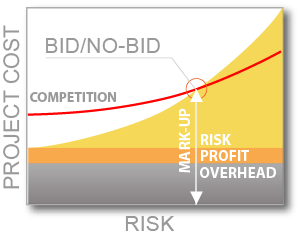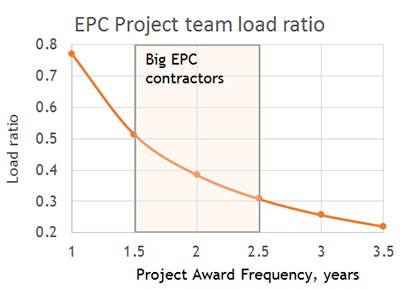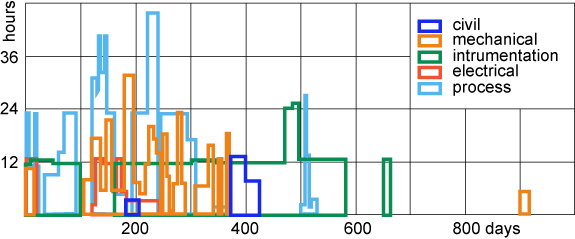
The trade-off between the opportunities and risks represented by desalination mega-projects is one of the most important issues for EPC contractors planning to operate globally. This trade-off boils down to a simple question: To bid or not to bid?
Bidding is expensive. And the bigger the project, the more expensive it is. The bidding for 500 MLD SWRO project BOO contract may cost over US$ 1 million. These expenses may be irrevocable in case the company loses the project. So it is reasonable not to focus energy on bids you are unlikely to win to save money, time and resources.
Even if a company is awarded a project, there is always a risk of the project overruns due to causes disregarded during bidding. The reason is not unprofessionalism, but rather optimism bias and fear to lose the job as the construction times for the said 500 MLD project is around 4 to 5 years. If I compare it to the average company turnover of 5 - 7 years, I may say that it is a big part of one's professional life.
Both (optimism and fear) may push a project beyond reasonable risk limits - bid/no-bid point - separating success from failure.
Today Bid/No-Bid Analysis (BNBA) is a questionnaire where each question adds some score to the result. The higher the score, the less risk is of the project failure. BNBA counterbalances the decisions otherwise be made based on gut feelings, experience, and educated guesses.
Offered by Crenger BNBA web interface divides all the questions (over 60) into 4 categories: company, project, market and customer. The categories and questions weights, and summation algorithms may be easily customized. In case of the negative result, the project offers cannot be retrieved and printed.
Despite obvious advantages, BNBA is not an industry standard.
The second approach moves the focus from BNBA to the project optimal mark-up prediction. In the figure above it is an intersection of two curves – the bidder's project cost and the competitor's one.
There is a big difference between these approaches. BNBA is deterministic in nature and is meant to be done before bidding to avoid related costs and the resources allocation. The second is probabilistic and executed only after the project cost estimation. It allows maximizing the value of the expected profit – the most important objective of bidding strategy.
The second approach is substantially more accurate and significantly increases the win rate, but it comes at a price of bidding full process.
As shown in the figure, the mark-up is a sum of the overhead expenses, planned profit and the risk premium. Is that all we need instead of 60-odd questions? Not really. I did not mention the elephant in the room.
Surveys conducted in many industries in the past confirm that cost estimation accuracy is one of the principal variables controlling the probability of producing a winning bid.
In other words, the mark-up prediction is as good as your cost estimation platform.
I named overhead expenses as a second-in-importance factor based on the analysis of 5 megaproject schedules stored in the Crenger database together with the resources daily workloads.

The shocking finding is that the project team average daily workloads are below 24%! This figure rises to 50% if the contractor is awarded a new megaproject every 1.5 years! (Compare this to the megaproject construction time of 3 – 5 years) The last figure roughly adds 6 - 9% overhead to the EPC project cost. It means imminent death to the contracts including only engineering and procurement, to effective collaboration between desalination technology providers and grass-root engineering contractors.

So how to survive and strike a balance between the ease of BNBA and the accuracy of the mark-up prediction?
I suggest four steps.
- Do more for substantially less and do it faster than competitors by moving to the Crenger platform
- Leverage your decision making with Bid/No-Bid application
- Outsource everything that comes after award and move to networking of clients, project contractors and equipment suppliers. Learn how Crenger does this.
- Track your competitors and vendors with applications offered by Crenger
The main takeaway? Networking of Clients, Contractors, and OEMs is what comes after LinkedIn.
